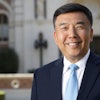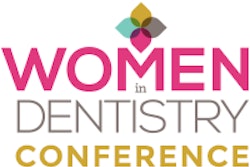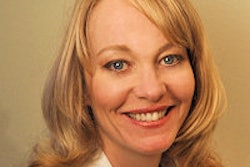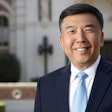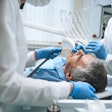
There's never been a better time to be a woman in dentistry. Almost half of all U.S. dental school students are women, and women are accounting for increasing numbers of private practice and academic positions in North America as well.
“Dentistry ... allows women to control their hours so that they can find balance between family and profession.”
— Jean Gaffney Furuyama, D.D.S.
In the U.S., prior to the early 1970s, dentists were almost exclusively men, with women accounting for just 1.1% of first-year dental school enrollees in 1968, according to the ADA. But by 2006, 43.5% of dental school graduates were women. In addition, the percentage of women in active private practice has increased to approximately 20% today, and in 2008 women accounted for 24% of deans and interim deans of dental schools.
What led to this shift? Lynn Carlisle, D.D.S., author of In a Spirit of Caring and founder of the related organization ISOC, as well as author of several articles on the differences between the way men and women practice dentistry, attributes this shift to two key cultural changes:
- The women's liberation and civil rights movements of the 1960s and early 1970s, with the attendant federal legislation to fund grants and encourage increasing enrollments of women in professional health schools
- The impact birth control had on opening the doors for women to have a professional career because they could choose when to have children
But while women in general may have come a long way in the last 40 years, some challenges remain on the professional front. For those who choose dentistry, for example, they face ongoing misconceptions about the number of hours they are willing and able to work.
“When I was going through dental school, I had a faculty member say to me, ‘We like having women around -- they look good in skirts and they'll never be competition for men.’ ”
— Karin Quick, D.D.S., Ph.D., University of
Minnesota School of Dentistry
"National numbers show that the total number of hours that women dentists practice per year is only about 3% lower than men," said Connie Drisko, D.D.S., dean of the Medical College of Georgia School of Dentistry. "And while that difference is expected to rise to about 6% in the next few years, in part because there are going to be so many more women practicing, some of whom will take time off for childbirth and child care, we can make it work. We're used to battling and making it work."
Jean Gaffney Furuyama, D.D.S., worked in the airline industry before opting for dentistry, graduating in 1979 as one of just 11 women in a class of 213. Dr. Furuyama, who was born in the U.S. but became fluent in Japanese after moving to Japan with her husband, took care of her young child with the help of a nanny while establishing a successful New York practice of mostly Japanese-speaking patients.
Today Dr. Furuyama is president of the Japanese Medical Society of America -- the first non-Japanese, nonphysician, and woman to hold this position. She is also a past president of the American Association of Women Dentists and a member of the New York State Board for Dentistry.
For her, the ascendancy of women in dentistry "is the logical extension of the woman's lib movement of the 1970s, which gave women not just the call to join the workforce but the desire to do jobs as well as men in any field they chose." Dentistry offers women the possibility of doing a job that helps mankind while bringing the financial rewards that accompany the professions, she added. "Dentistry, which is mostly a profession of solo practitioners, also allows women to control their hours so that they can find balance between family and profession."
Finding a balance
|
Tips for achieving a balanced life Sheri Doniger, D.D.S., practices part-time in Lincolnwood, IL. She graduated from dental school at age 29 after practicing as a dental hygienist. She married her "amazingly supportive husband" just three days before starting her dentistry studies and has two children. In addition to her practice, she lectures women around the U.S. on how to balance the demands of work and home life. She says good time management and being able to say "no" are the two main requirements. Dr. Doniger offers other helpful tips:
|
Like Dr. Furuyama, Dr. Drisko was one of just 15 women among 165 graduates in 1980 when she completed her dental education at age 40. Prior to that, she was a dental hygienist with a husband and stepdaughter to care for.
She began her journey into academia in 1984 as a faculty member at the University of Missouri-Kansas City, where she'd gone to dental school, then was recruited by the University of Louisville in 1993. In 2003, she was the first woman appointed as dean of the Medical College of Georgia School of Dentistry. She also became the first woman named director and chair of the American Board of Periodontology.
Similarly, dentistry was the first career choice for Teresa Dolan, D.D.S., M.P.H., dean of dentistry at the University of Florida, Gainesville. She is married to a man who is "very supportive" and has a 14-year-old daughter.
"It is fairly demanding to be a woman and an academician," Dr. Dolan admitted. "We have some junior faculty who are juggling having children and fulfilling their academic responsibilities."
But times are changing, she added. "I don't think our current D.M.D. students give a second thought about gender or ethnicity. I think they see the world differently than our generation or older generations. When I became the dean in 2002, although the dental school was a fairly traditional dental community, I felt a very easy and warm acceptance. So I think that times have changed."
Karin Quick, D.D.S., Ph.D., associate program director and assistant clinical dental specialist at the University of Minnesota School of Dentistry, is working to increase the pace of such changes. Currently enrolled in the American Dental Education Association (ADEA)/Johnson & Johnson Healthcare Products Enid A. Neidle Scholar-in-Residence Program, Dr. Quick is conducting a study on trust and respect in dental education.
"When I was going through dental school, I had a faculty member say to me, 'We like having women around -- they look good in skirts and they'll never be competition for men,' " she said. "Whether those sorts of things get said today or not, the sentiment is still out there. My ultimate goal with this research project is to develop some sort of program that improves the culture and the environment in dental schools so that there is an atmosphere of mutual respect."
Part II of this series will look at how women are taking more leadership roles in U.S. dental education and the programs that are helping them advance their careers.
Copyright © 2009 DrBicuspid.com



